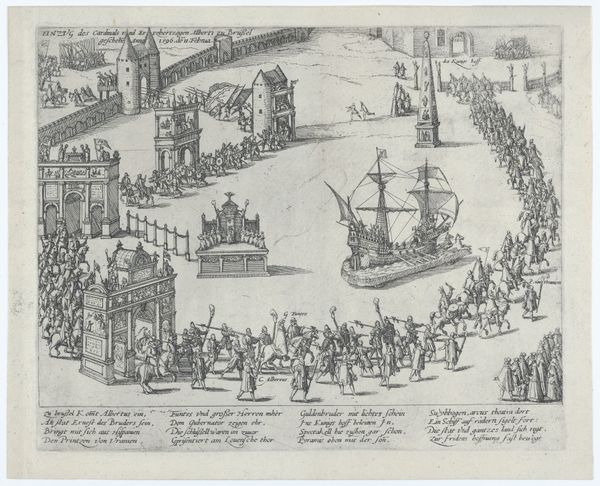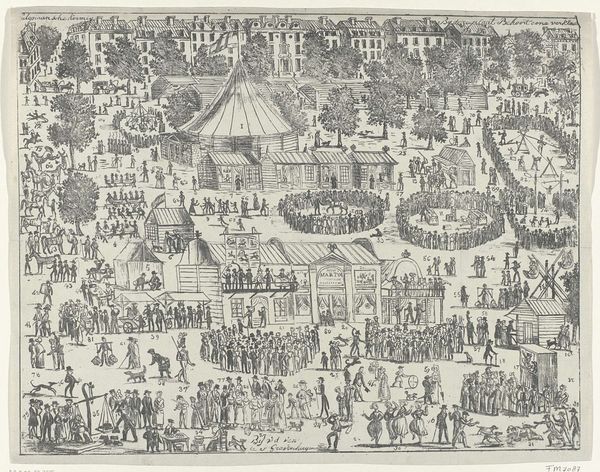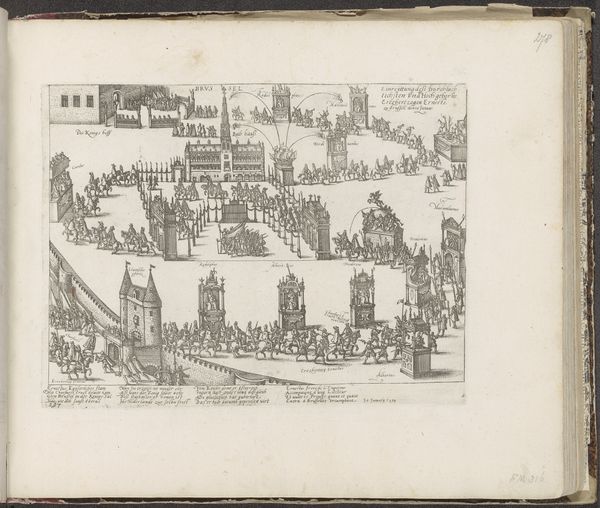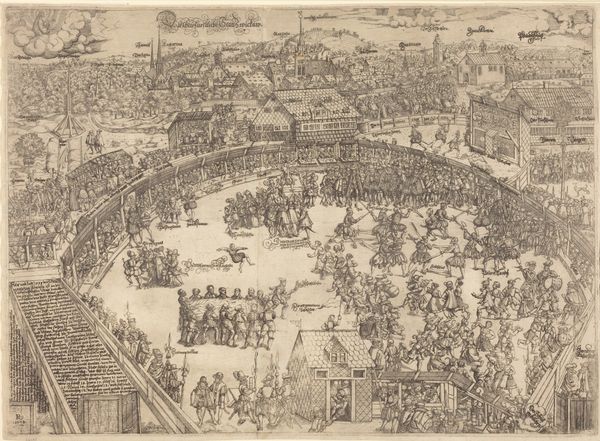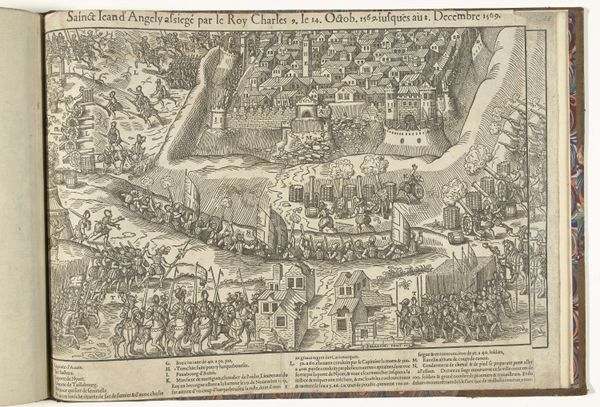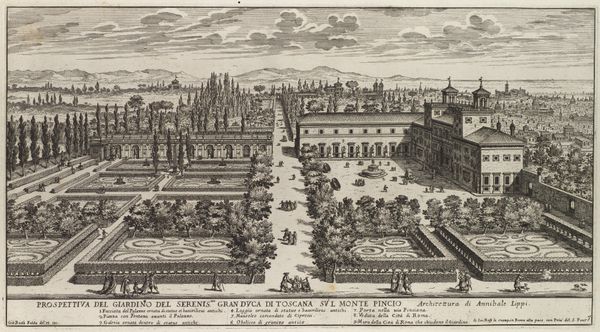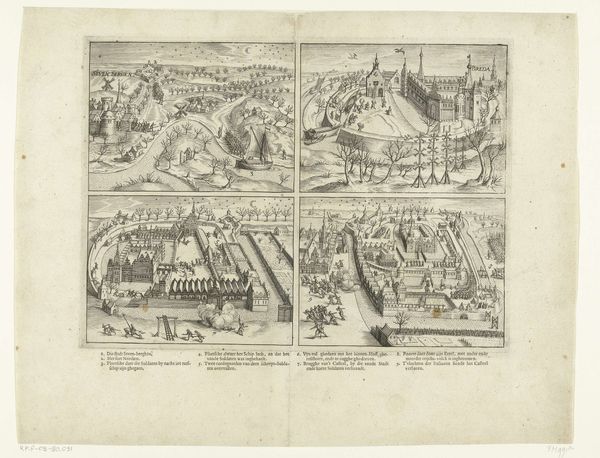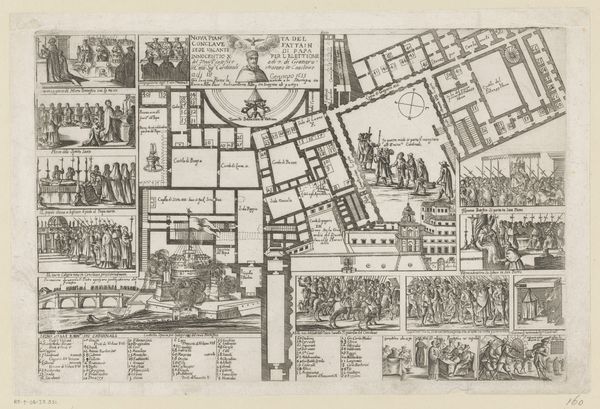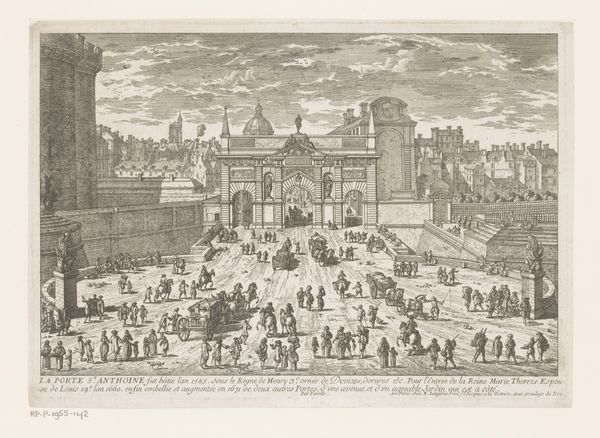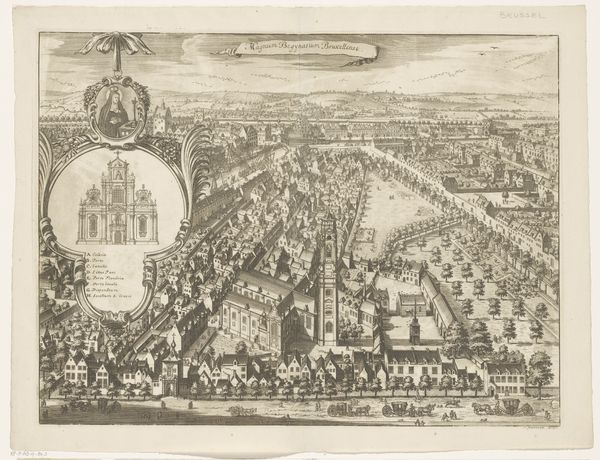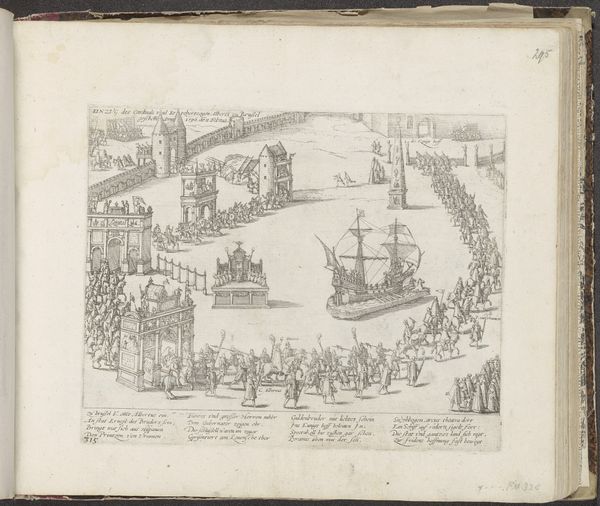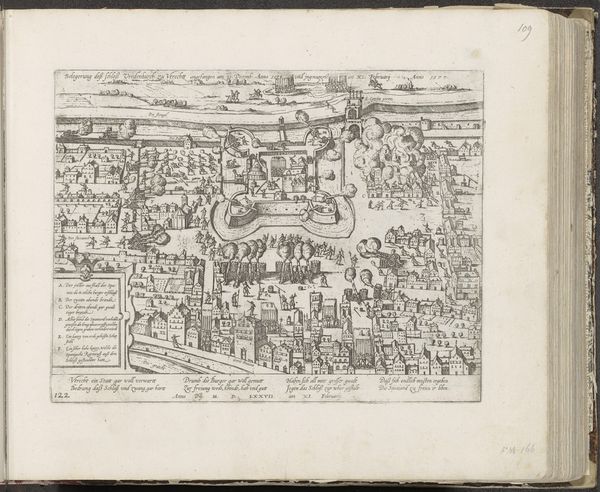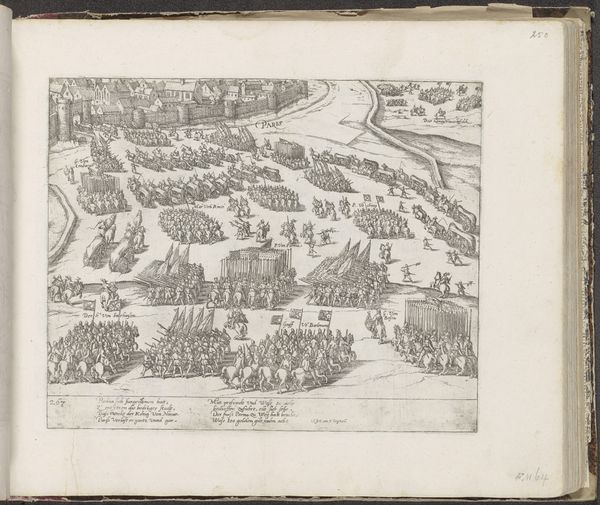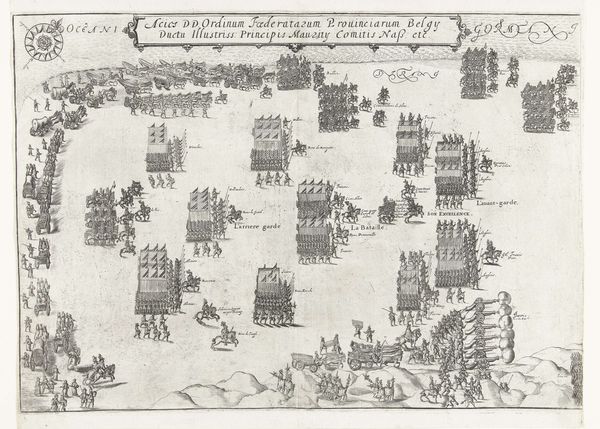
Entrance of the Archduke Ernest to Brussels, January 30, 1594 1594 - 1600
0:00
0:00
drawing, print, engraving
#
portrait
#
drawing
#
medieval
# print
#
soldier
#
horse
#
cityscape
#
history-painting
#
northern-renaissance
#
engraving
#
building
Dimensions: Sheet (Trimmed): 8 1/2 × 10 7/8 in. (21.6 × 27.7 cm)
Copyright: Public Domain
Curator: The first impression this gives me is almost architectural. Like a blueprint of power in motion. Editor: It's intricate, certainly. This engraving, "Entrance of the Archduke Ernest to Brussels, January 30, 1594," made sometime between 1594 and 1600, captures a moment of opulent display. I'm thinking specifically of how the materials themselves – the ink, the paper, the very act of printing – communicate as much about power as the subject matter. Curator: Oh, I feel that! I see a dance – not of individuals, but of symbols and institutions. Each building, each mounted soldier… they're all pieces in a grand chess game. The anonymous artist, cleverly showing us not just *what* happened but *how* it was staged for maximum impact, and I can’t help wonder if there is another hidden layer within that stage design, beyond what the Archduke imagined for himself. Editor: Absolutely. And the choice of engraving – think about the labor involved in creating those lines, the precision, the sheer number of impressions that could be made. This wasn't just about recording history; it was about disseminating it, reproducing the Archduke's image and authority on a mass scale. Consider it very early PR. Curator: True! And there’s a definite "manufactured" feel that doesn’t really invite us into the triumph but rather presents it from a distance. The overall sense of objectivity actually lends itself to almost a kind of dream landscape of historical staging, if you will. Almost theatre. Editor: Precisely. And it reminds us that the reality of this historical event was likely far messier, more complicated, involving workers, artisans, the sourcing of materials – all the unseen labor that made this "triumph" possible. It begs the question of the hidden networks of creation. Curator: It makes me think how power always depends on those hidden networks, those unseen efforts, to maintain its facade. Editor: So true. Examining those networks lets us reimagine history less as a series of grand events and more as an intricate web of human interactions, driven by tangible things. Curator: Beautiful! Next time I look at this, I'll be thinking about the web as much as the spider at its center. Editor: Exactly – seeing beyond the surface reveals so much more about how the world actually works, even in 16th-century Brussels.
Comments
No comments
Be the first to comment and join the conversation on the ultimate creative platform.
